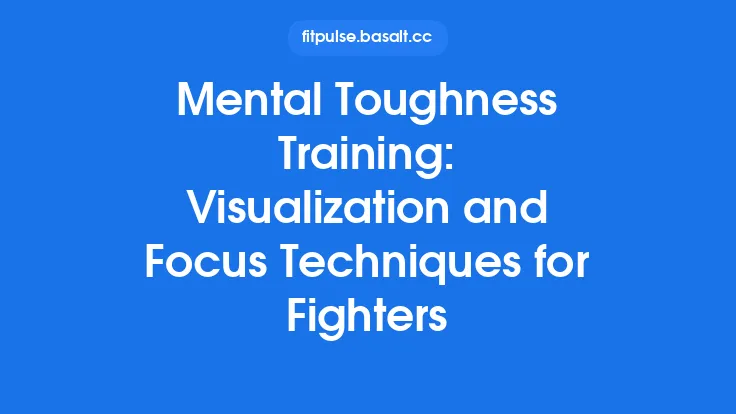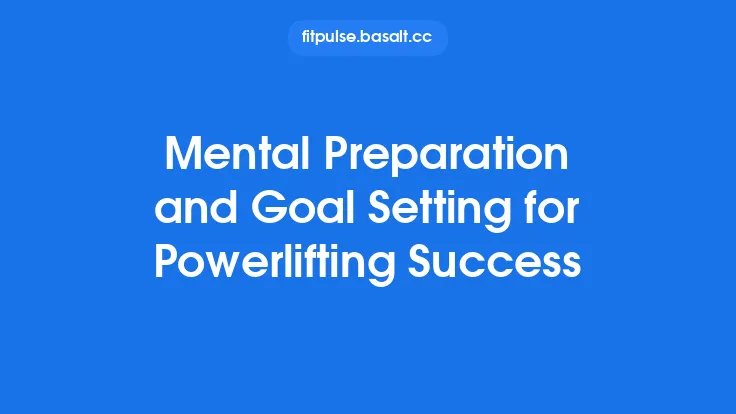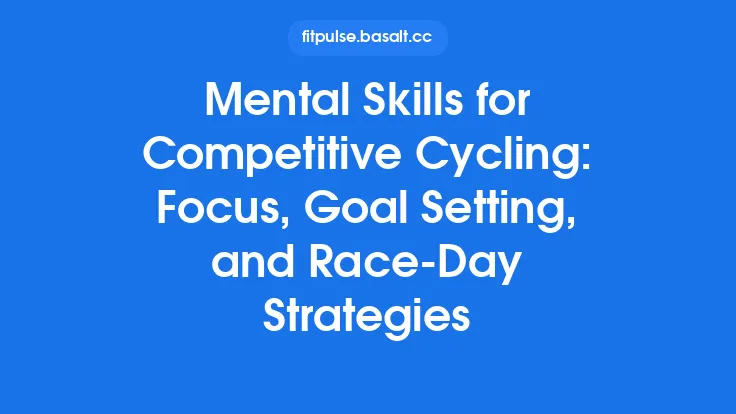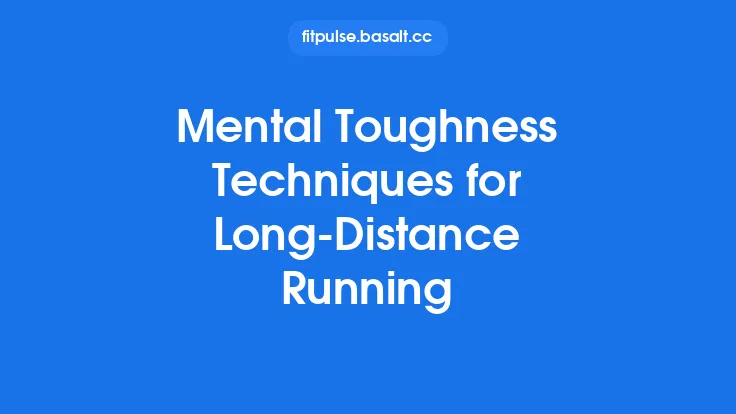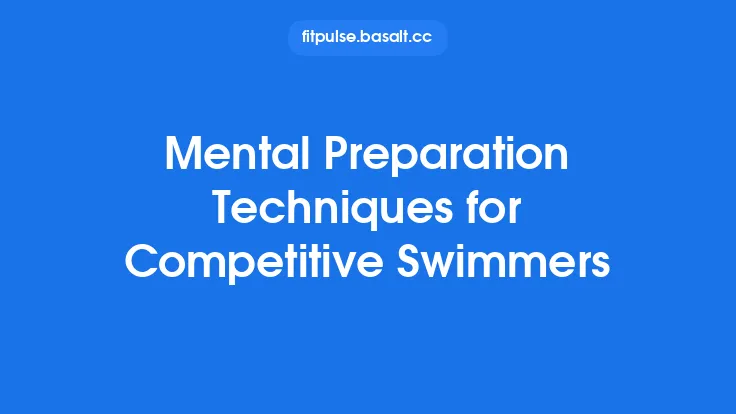Mental rehearsal and visualization are powerful, non‑physical strategies that athletes, clinicians, and fitness enthusiasts can use to accelerate the acquisition of new motor skills. While the body remains still, the mind actively simulates the movement, engaging many of the same neural pathways that are recruited during actual execution. This mental practice can refine timing, enhance coordination, and build confidence, making it a valuable complement to traditional physical training. Below is a comprehensive guide that explores the science, techniques, and practical applications of mental rehearsal for skill acquisition within the realm of motor learning.
Defining Mental Rehearsal and Visualization
Mental rehearsal refers to the deliberate, structured practice of a movement or sequence of movements in the mind without overt physical execution. It is often synonymous with motor imagery and can be performed in a seated or lying position, allowing the practitioner to focus entirely on the internal representation of the skill.
Visualization (or visual imagery) is a subset of mental rehearsal that emphasizes the creation of vivid, sensory-rich mental pictures of the movement, the environment, and the desired outcome. Visualization can be internal (first‑person perspective, as if you are performing the action) or external (third‑person perspective, watching yourself from outside).
Both constructs share the core principle of activating the brain’s motor planning networks without actual muscle contraction, thereby strengthening the mental blueprint of the skill.
Theoretical Foundations and Cognitive Mechanisms
- Symbolic Coding Theory – Suggests that imagined movements are encoded as symbolic representations in the brain, which can later be translated into motor commands. The fidelity of these symbols determines how accurately the imagined action matches the real one.
- Simulation Theory – Proposes that the brain simulates the sensory consequences of an action during imagery, creating a “virtual rehearsal” that updates internal models of the movement.
- Dual‑Task Interference – When mental rehearsal is performed concurrently with a secondary cognitive task, performance declines, indicating that imagery consumes attentional resources similar to actual movement execution.
These theories converge on the idea that mental rehearsal is not a passive activity; it actively engages cognitive processes such as attention, working memory, and motor planning.
Neural Correlates of Imagery in Motor Skill Learning
Functional neuroimaging and electrophysiological studies consistently reveal overlapping activation patterns between imagined and executed movements:
| Brain Region | Role in Physical Execution | Activation During Imagery |
|---|---|---|
| Primary Motor Cortex (M1) | Generates descending motor commands | Subthreshold activation, reflecting motor planning |
| Premotor Cortex (PMC) | Plans and selects movements | Robust activation, especially for complex sequences |
| Supplementary Motor Area (SMA) | Initiates internally generated actions | Strong involvement during internal perspective imagery |
| Cerebellum | Fine‑tunes timing and coordination | Engaged to predict sensory feedback in the imagined scenario |
| Parietal Cortex | Integrates spatial information | Active during visual and kinesthetic imagery of limb position |
The presence of event‑related desynchronization (ERD) in the mu (8–13 Hz) and beta (13–30 Hz) bands during imagery mirrors the patterns seen during actual movement, confirming that the motor system is primed even in the absence of overt output.
Types of Imagery: Kinesthetic vs. Visual
| Dimension | Description | Primary Neural Substrates | Practical Emphasis |
|---|---|---|---|
| Visual Imagery | Creation of a mental picture of the movement, environment, and outcome. Can be internal (first‑person) or external (third‑person). | Occipital cortex, posterior parietal areas | Useful for spatial orientation, timing, and strategy planning. |
| Kinesthetic Imagery | Sensation of movement, effort, and proprioceptive feedback without actual muscle activation. | Primary motor cortex, SMA, cerebellum | Critical for refining force production, joint angles, and movement fluidity. |
| Combined Imagery | Simultaneous use of visual and kinesthetic cues, often yielding the most robust neural activation. | Integrated network of visual and motor regions | Recommended for complex, multi‑joint skills. |
Research indicates that athletes who can generate vivid kinesthetic sensations during imagery tend to experience greater performance gains than those relying solely on visual cues.
Designing Effective Mental Rehearsal Sessions
- Set Clear Objectives – Define the specific component of the skill to be rehearsed (e.g., foot placement, swing trajectory, breathing pattern).
- Select the Perspective – Choose internal perspective for fine‑motor adjustments; external perspective for strategic overview.
- Structure the Session
- Warm‑up: 1–2 minutes of relaxed breathing to enhance focus.
- Imagery Block: 3–5 minutes of continuous, uninterrupted imagery of the target movement.
- Reflection: 1 minute of verbal or written debrief to reinforce the mental representation.
- Control the Pace – Align the imagined tempo with the desired execution speed. Use a metronome or internal counting to maintain consistency.
- Incorporate Sensory Details – Imagine tactile sensations (e.g., grip pressure), auditory cues (e.g., crowd noise), and emotional states (e.g., confidence, calm).
- Progressive Complexity – Begin with isolated components (e.g., a single joint movement) and gradually integrate them into full‑skill sequences.
- Frequency – Daily short sessions (5–10 minutes) are more effective than occasional long sessions, as they reinforce neural pathways regularly.
Integrating Imagery with Physical Practice
The most potent learning outcomes arise when mental rehearsal is interleaved with actual movement execution:
- Pre‑Performance Imagery – Conduct a brief visualization immediately before a physical attempt to prime the motor system and reduce anxiety.
- Post‑Execution Reflection – After a physical trial, mentally replay the movement, focusing on successful elements and correcting errors.
- Concurrent Imagery – During rest intervals between sets, use imagery to rehearse the upcoming set, maintaining neural activation without fatigue.
This integration leverages the priming effect of mental rehearsal, whereby the motor cortex remains in a heightened state of readiness, facilitating smoother transitions into physical execution.
Evidence from Research Across Disciplines
- Sports Science: A meta‑analysis of 25 randomized controlled trials reported an average performance improvement of 5–15 % in speed, accuracy, or power when athletes incorporated structured imagery into training programs.
- Rehabilitation: Stroke survivors who practiced motor imagery alongside conventional therapy showed greater gains in upper‑limb function compared to therapy alone, highlighting the transferability of mental rehearsal to clinical populations.
- Music Performance: Pianists using kinesthetic imagery of finger movements achieved faster acquisition of new passages than those relying solely on physical repetition.
- Motor Skill Acquisition in Novices: In a controlled study with beginner tennis players, those who performed 10 minutes of mental rehearsal before each practice session demonstrated superior serve accuracy after four weeks relative to a control group.
These findings underscore the broad applicability of mental rehearsal across skill levels and domains.
Practical Applications in Various Sports and Exercise Modalities
| Sport / Modality | Imagery Focus | Example Scenario |
|---|---|---|
| Track & Field (Sprint) | Kinesthetic feel of stride length, foot strike, and arm swing | Visualize the start block explosion, then transition to a smooth, powerful stride pattern. |
| Weightlifting | Tactile sensation of bar path, joint angles, and breathing | Imagine the barbell’s trajectory from floor to lockout, feeling the tension in the posterior chain. |
| Gymnastics | Full‑body spatial orientation and balance | Picture the entire routine from take‑off to landing, emphasizing body alignment on each apparatus. |
| Team Sports (Soccer, Basketball) | Decision‑making and situational awareness | Rehearse a specific play, visualizing teammates’ positions, ball trajectory, and optimal passing angles. |
| Yoga / Pilates | Breath‑movement synchronization | Imagine the rise and fall of the torso with each inhalation and exhalation, feeling the stretch in targeted muscles. |
| Rehabilitation (Post‑Surgical) | Controlled joint movement without load | Mentally rehearse the range of motion for a newly repaired knee, focusing on smooth, pain‑free motion. |
Tailoring the imagery content to the sport’s unique demands maximizes relevance and transfer to actual performance.
Common Challenges and Strategies to Overcome Them
| Challenge | Underlying Issue | Mitigation Strategy |
|---|---|---|
| Vividness Deficit | Limited ability to generate detailed mental images. | Use guided imagery recordings, start with simple visual cues, and progressively add sensory layers. |
| Mental Fatigue | Prolonged imagery sessions can be cognitively draining. | Keep sessions short (5–10 minutes), intersperse with brief physical activity, and schedule imagery when alert (e.g., morning). |
| Distraction | Intrusive thoughts disrupt focus. | Practice mindfulness breathing before imagery, and employ a quiet, low‑stimulus environment. |
| Over‑reliance on Visual Perspective | Neglect of kinesthetic sensations reduces motor transfer. | Deliberately shift to internal perspective for at least half of each session. |
| Lack of Structured Feedback | Uncertainty about imagery accuracy. | Record self‑reports of imagery vividness (e.g., using the Vividness of Movement Imagery Questionnaire) and compare with video analysis of actual performance. |
Addressing these obstacles early ensures that mental rehearsal remains an effective, sustainable component of skill development.
Assessing Imagery Ability and Progress
- Questionnaires
- Vividness of Movement Imagery Questionnaire (VMIQ) – Rates visual and kinesthetic vividness on a Likert scale.
- Movement Imagery Questionnaire‑Revised (MIQ‑R) – Evaluates the ease of generating internal and external imagery.
- Objective Measures
- Electroencephalography (EEG) Mu Rhythm Suppression: Greater ERD during imagery indicates higher motor engagement.
- Functional Near‑Infrared Spectroscopy (fNIRS): Monitors cortical oxygenation changes during mental rehearsal.
- Performance Correlates
- Track improvements in the targeted skill (e.g., accuracy, speed) alongside imagery practice logs to infer the efficacy of mental rehearsal.
Regular assessment helps tailor the difficulty and focus of imagery sessions to the individual’s evolving capabilities.
Technology‑Enhanced Visualization Tools
- Virtual Reality (VR): Immersive environments allow athletes to experience realistic scenarios, enhancing spatial fidelity of visual imagery.
- Augmented Reality (AR) Overlays: Project movement cues onto the athlete’s field of view, facilitating real‑time mental rehearsal of technique.
- Biofeedback Devices: Heart‑rate variability (HRV) monitors can cue the practitioner to enter a relaxed state optimal for imagery.
- Mobile Apps: Guided imagery scripts, timer functions, and progress tracking are now widely available, making consistent practice more accessible.
When integrating technology, ensure that the tool supports, rather than distracts from, the core mental processes of imagery.
Guidelines for Coaches and Practitioners
- Educate Athletes – Explain the neurophysiological basis of mental rehearsal to foster buy‑in.
- Individualize Scripts – Tailor imagery content to each athlete’s skill level, sport, and personal sensory preferences.
- Model the Process – Demonstrate a short imagery routine during a team meeting to provide a concrete example.
- Schedule Regular Check‑Ins – Review imagery logs weekly, discuss vividness scores, and adjust focus areas as needed.
- Combine with Goal Setting – Link imagery sessions to specific performance goals (e.g., “visualize a clean lift with perfect bar path”).
- Maintain Ethical Boundaries – Avoid imposing unrealistic expectations; respect athletes’ mental comfort zones and cultural attitudes toward mental training.
By embedding mental rehearsal into the broader coaching framework, practitioners can amplify the impact of physical training without overloading the athlete.
Future Directions and Emerging Trends
- Neuroadaptive Imagery Training – Real‑time EEG feedback could guide athletes to achieve optimal cortical activation levels during imagery, personalizing the intensity of mental rehearsal.
- Hybrid Motor‑Cognitive Simulations – Combining mental rehearsal with cognitive decision‑making tasks (e.g., tactical scenario planning) may accelerate the integration of skill execution and strategic thinking.
- Longitudinal Imaging Studies – Tracking structural and functional brain changes over months of systematic imagery practice will clarify the durability of neural adaptations.
- Cross‑Disciplinary Transfer – Investigating how imagery skills developed in one domain (e.g., music) influence motor learning in another (e.g., sport) could reveal universal principles of mental rehearsal.
Continued research and technological innovation promise to refine mental rehearsal techniques, making them even more precise, measurable, and effective for skill acquisition across the spectrum of exercise science.
In summary, mental rehearsal and visualization are evidence‑based, low‑cost strategies that harness the brain’s inherent capacity to simulate movement. By understanding the underlying mechanisms, selecting appropriate imagery modalities, and integrating structured mental practice with physical training, athletes and practitioners can accelerate skill acquisition, enhance performance consistency, and foster a deeper, more resilient motor memory. The systematic application of these techniques—supported by assessment tools, technology, and coaching best practices—offers a robust pathway to mastering complex motor skills in any exercise or sport context.
